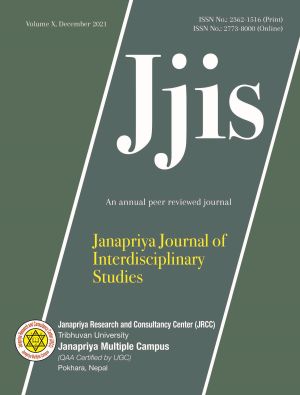Quality Assessment of Water from Some Selected Sources in Pokhara, Nepal
DOI:
https://doi.org/10.3126/jjis.v10i01.42619Keywords:
Conductivity, hardness, Pokhara, surfactants, water pollutantsAbstract
The present study was carried out to analyze and compare the physicochemical properties of water from Seti Gandaki river, Kali stream, irrigation canal, bore well and potable sources in Pokhara Metropolitan-1, Kaski, Nepal by using standard techniques. Observed properties from different sources were compared to each other and with recommended standard World Health Organization (WHO) values. The result of the study showed that the large number of physical and chemical parameters such as color odor, temperature, specific gravity, relative turbidity, suspended solid (SS), total dissolved solid (TDS), total solid (TS), pH, electrical conductivity (EC), alkalinity, carbonate, bicarbonate, residual sodium carbonate (RSC), boron, chloride, sulphate, nitrate and nitrite-N, calcium hardness, magnesium hardness, total hardness, oil and grease, phenol, surfactants were within the permissible limit of WHO. The observed color of river water and irrigation water was glacial creamy white due to excess of cream white colored suspended colloidal particles in water. The analyzed amount of iron for the sample from different sources was more than that of permissible limit of WHO standard and iron amount was much more for bore well sample. On the basis of analyzed result and WHO standard values, it was concluded that potable water, bore well water and stream water can be used for washing, bathing, irrigation, and industrial purposes after proper treatments. In this study, most of the physicochemical and organic parameters were also analyzed but not the microbiological species.




